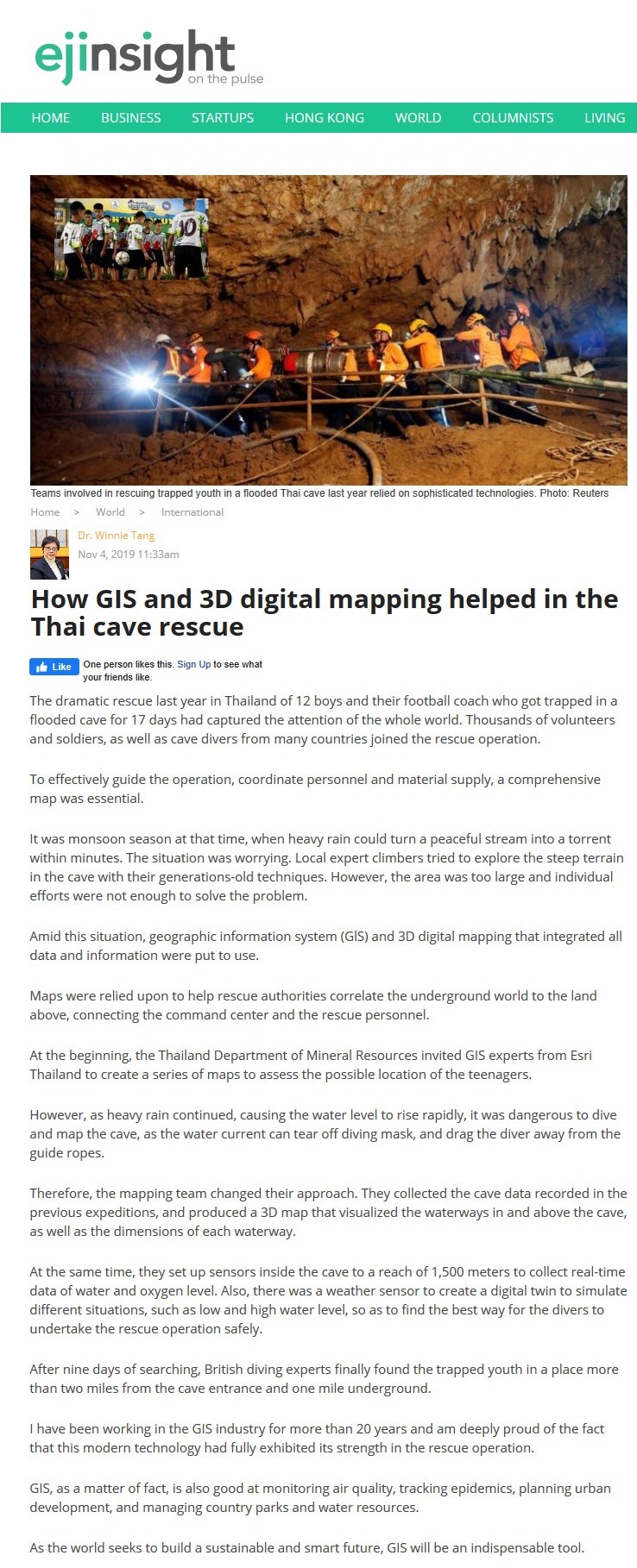網上版請按此

How GIS and 3D digital mapping helped in the Thai cave rescue
The dramatic rescue last year in Thailand of 12 boys and their football coach who got trapped in a flooded cave for 17 days had captured the attention of the whole world. Thousands of volunteers and soldiers, as well as cave divers from many countries joined the rescue operation.
To effectively guide the operation, coordinate personnel and material supply, a comprehensive map was essential.
It was monsoon season at that time, when heavy rain could turn a peaceful stream into a torrent within minutes. The situation was worrying. Local expert climbers tried to explore the steep terrain in the cave with their generations-old techniques. However, the area was too large and individual efforts were not enough to solve the problem.
Amid this situation, geographic information system (GlS) and 3D digital mapping that integrated all data and information were put to use.
Maps were relied upon to help rescue authorities correlate the underground world to the land above, connecting the command center and the rescue personnel.
At the beginning, the Thailand Department of Mineral Resources invited GIS experts from Esri Thailand to create a series of maps to assess the possible location of the teenagers.
However, as heavy rain continued, causing the water level to rise rapidly, it was dangerous to dive and map the cave, as the water current can tear off diving mask, and drag the diver away from the guide ropes.
Therefore, the mapping team changed their approach. They collected the cave data recorded in the previous expeditions, and produced a 3D map that visualized the waterways in and above the cave, as well as the dimensions of each waterway.
At the same time, they set up sensors inside the cave to a reach of 1,500 meters to collect real-time data of water and oxygen level. Also, there was a weather sensor to create a digital twin to simulate different situations, such as low and high water level, so as to find the best way for the divers to undertake the rescue operation safely.
After nine days of searching, British diving experts finally found the trapped youth in a place more than two miles from the cave entrance and one mile underground.
I have been working in the GIS industry for more than 20 years and am deeply proud of the fact that this modern technology had fully exhibited its strength in the rescue operation.
GIS, as a matter of fact, is also good at monitoring air quality, tracking epidemics, planning urban development, and managing country parks and water resources.
As the world seeks to build a sustainable and smart future, GIS will be an indispensable tool.
Dr. Winnie Tang
Adjunct Professor, Department of Computer Science, Faculty of Engineering and Faculty of Architecture, The University of Hong Kong